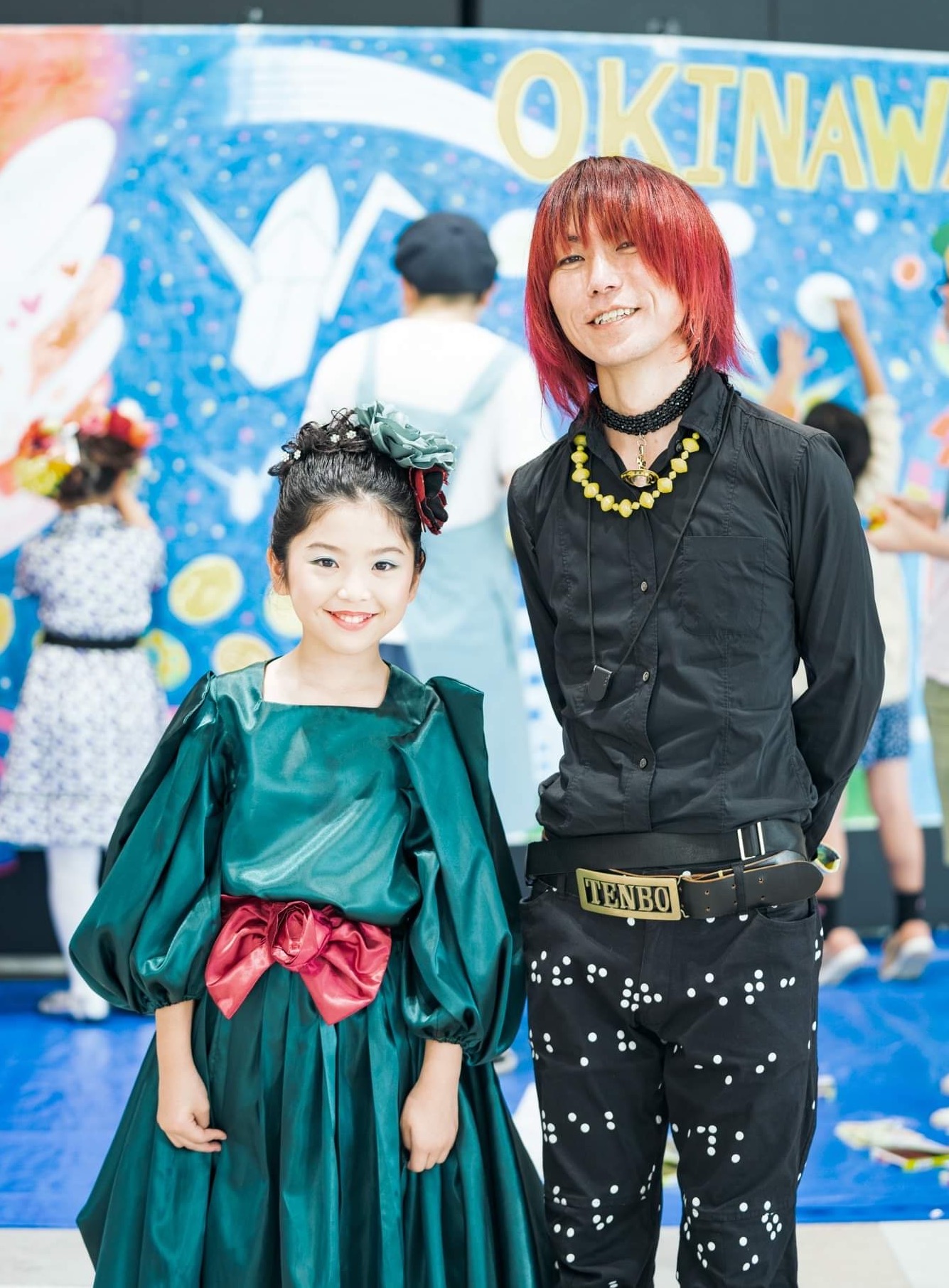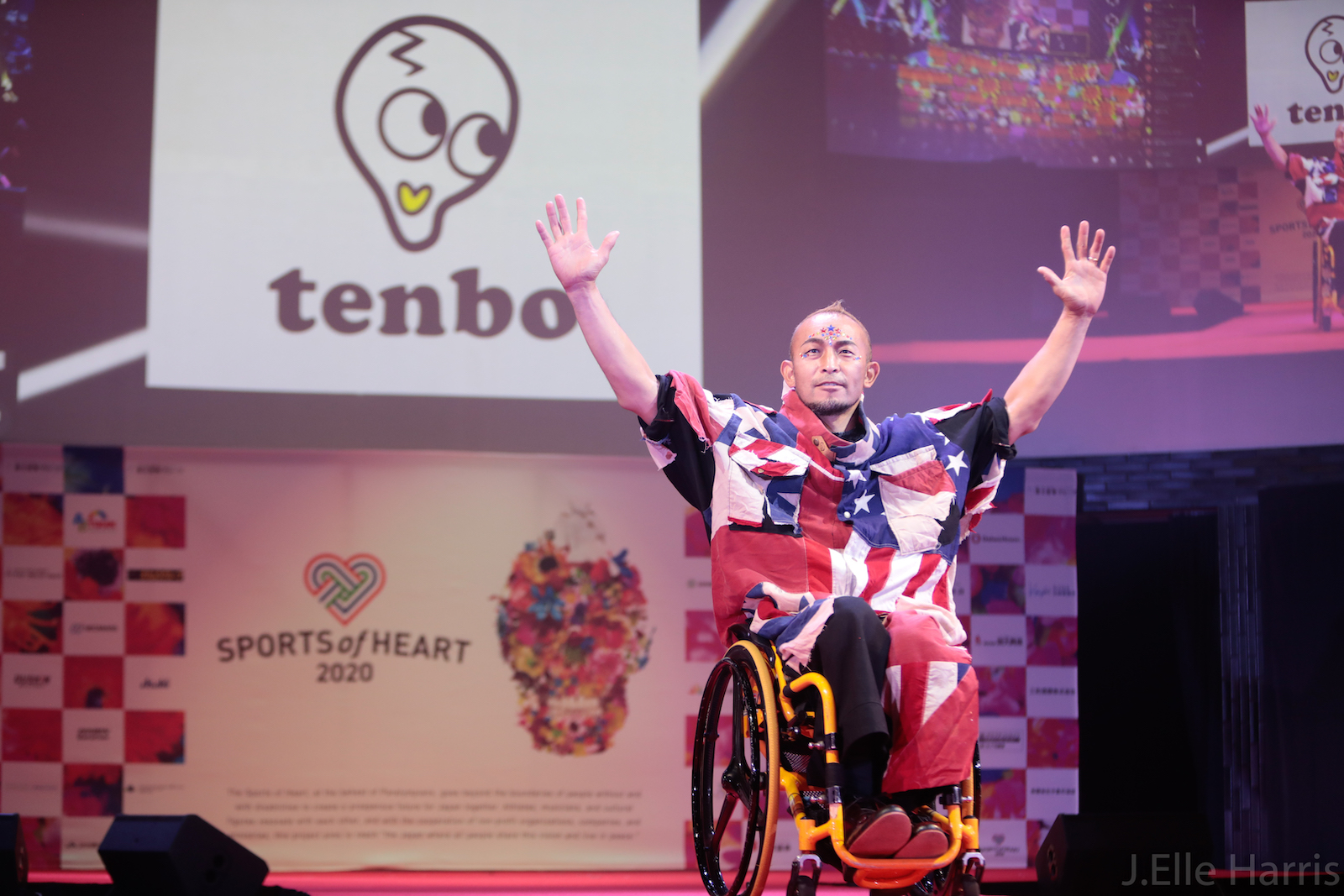Fashion designer Takafumi Tsuruta launched his first clothing brand, Tenbo, in 2015, a brand that was initially inspired by his strong belief that fashion should not only be made available but also enjoyable for everyone regardless of age, nationality, gender and disability.
Tenbo, a name that originates from Tsuruta's favorite manga character and the term for “elephant” in Swahili, the brand seeks both kindness and strength. Recently, in addition to offering fashionable and functional clothing, Tsuruta has incorporated historical elements into his designs to promote world peace.

How did you set off your career as a fashion designer?
After finishing my studies at a professional school, I worked as a fashion designer for about eight years at three different companies. When I turned 29, I considered launching my own clothing brand, but I also realized I had no skills to convey my ideas and concepts. That was when I decided to take some time off my fashion career to become a teacher.
Teaching kids for me was a reality check – my messages and thoughts were hardly ever conveyed successfully to all of my students. However, I finally felt they were once I took the time to break down my ideas and explain them in a way that kids and young adults would also understand. Adults tend to use fancy words when their target audiences are also adults, but that same message is hardly understood by children. Then I realized that if I express my ideas from a child’s point of view, my message would, not only reach, but also be understood by a larger audience.
How did that experience influence your career as a fashion designer?
As a fashion designer, my focus was always on materialistic things; but as a teacher, my focus was shifted toward people. Working and interacting with children truly opened my eyes, which also helped me develop the concept for my brand – clothes that would help fulfill someone’s best interest. Then my next question was, “what kind of design would help me achieve that?”
For example, one of my students had taught me about the medical complications caused by bedsores, and more importantly, how garments with stitches are very troubling for people suffering from that particular condition. This is just one of the many ideas I gained from my former students.
How did you start your brand Tenbo?
Once I realized there was a good percentage of people out there who were having trouble finding the right clothes due to their health conditions, I wanted to create something that would meet their demands. While researching, however, all I could find were work clothes or clothes designed for helpers but no clothing brands that provided stylish designs that would allow, not only people with disabilities, but also those who were injured, to still enjoy fashion like everyone else.
Despite the demands, brands and designers tend to avoid getting involved because it is a very sensitive field. Someone will always criticize you for using “disability” as a selling point, or, for using people with disabilities to further promote your brand. In my case, I was very determined to stick to my beliefs, so I started Tenbo fully prepared to receive all the criticisms coming my way and to protect my models to the best of my abilities.

What changes do you wish your brand would bring upon our societies, especially in terms of discrimination against age, nationality, race, gender and disability?
I don’t necessarily agree with how the media sheds light on these types of issues. What I’ve been trying to do instead is to approach such social issues by actively organizing and participating in fashion shows where people can physically interact with our staff and models, as all my official models are a mix of children and young adults with and without disabilities. What I like about fashion shows is that people always learn something after spending an entire day backstage as part of our staff.
I did a fashion show three years ago where our theme was “leprosy” (or Hansen’s disease) for the same exact reason—I really wanted to get people’s attention on this matter. I “spice up” my designs with social issues such as human rights, discrimination, prejudice, peace and war, and I think my strategy has been working very well so far.
Can you tell us about your Pray for Peace Collection?
War is another very heavy topic, but I knew that expressing it through my designs would portray a powerful message, just like any other themes I’ve worked with so far. However, the goal of my project isn’t to reflect on war but to promote peace. I wanted to give people an opportunity to reflect on peace through fashion, but whether people take away or not take away from this collection is completely up to them.

My favorite dresses from this collection are Hiroshima’s “Dome of Hope,” Nagasaki’s “Virgin Mary,” and Okinawa’s “Himeyuri.” I’ve incorporated history into my designs, so each dress has a textbook element attached to them. All three were made by mixing 5,000-10,000 paper cranes donated from Hiroshima, Nagasaki, and Okinawa, the three cities that were greatly affected by World War II. What I wanted to do through these three sets of dresses was to encourage people to look at the three cities through the same values and perspectives, as I felt that in most cases, one is more recognized or talked about than the other.
How do you design your clothes so that they fit all body types?
It all comes down to the idea of “better too big than too small.” What I mean by this is that large size clothes can fit smaller individuals, but small size clothes only fit the smaller body types, which is why Tenbo’s clothing are mostly one size fits all. Our clothes are designed so that they can be enjoyed by all types of body shapes and health conditions – does not matter whether they are paralyzed, on a wheelchair, or have a hard time moving their arms; if you design the clothes slightly larger, size is no longer an issue in most cases.
When I design my clothes, I prioritize stylish and gradually add functionality. I would say they are 70% fashionable and 30% functional. Besides designing them larger, I also use stretchy fabric that is easy to wash and does not get wrinkled easily.

How do you want Tenbo to evolve as a brand from here on?
Over the past couple years, my overarching theme has been “for the children of our future.” What should we do as adults to educate and raise children without forcing our opinions on them? I often feel that I am doing more than what fashion designers usually do with their brands. Sometimes, I also feel like I’m a teacher all over again.
For a while now, I’ve been thinking about shifting my focus onto education. I had a phase where I wanted to build a proper school, but then I realized that Tenbo is kind of like a small school without an actual school building. It would be nice if I could slowly shift away from my career as a fashion designer to create a new form of education for our children.
© Japan Today Take our user survey and make your voice heard.
Take our user survey and make your voice heard.















1 Comment
Login to comment
Maria
An interesting read, and cool designs from a fine young man (aged 35 though it isn't mentioned in the article).